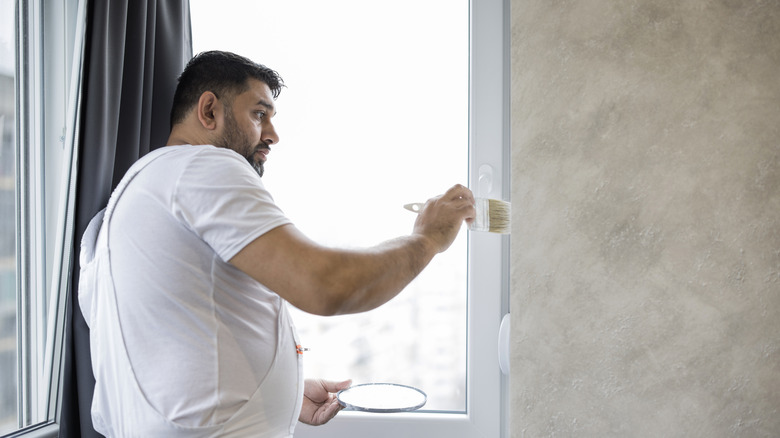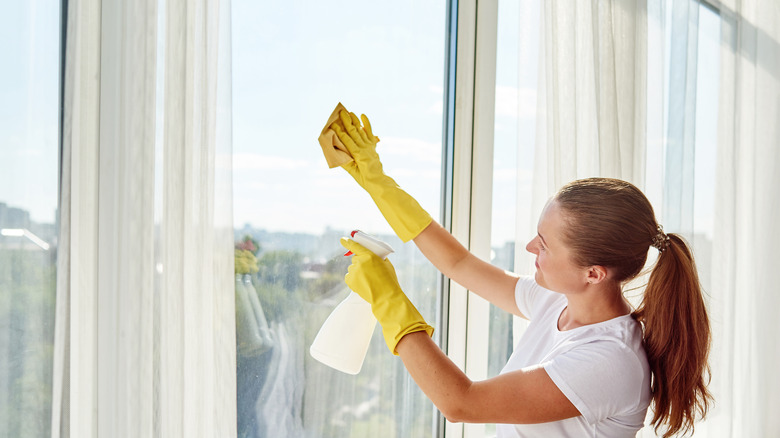This Nail Polish Remover Hack Makes Removing Paint From Glass Windows So Easy
A well-executed paint job feels so good. But even if there were a few casualties (like some paint stains on your windows), you don't have to sacrifice your pride in your work. In fact, a toiletry staple can save your window panes from these wayward marks, and you likely already have the solution on hand (no pun intended). Nail polish remover can be added to paint stains on window glass to dissolve them and leave your panes sparkling once again.
Nail polish contains acetone, which breaks the molecules in standard wall paint down, making it so you can wipe the droplets or brush strokes away with a cloth. The key is to let the solution soak into the color for at least one minute, allowing the chemicals to dissolve the paint. Nail polish can be used around the house for a variety of hacks, and even on your skin to eliminate paint residue which means while the acetone is strong enough to remove pigment, it won't ruin your window's surfaces.
Use acetone to dissolve paint
Not all nail polish will work for this trick, because some brands are acetone-free. Without the acetone to break up paint, the formula won't do any good on your windows. You don't want to use too much remover, either, just enough to cover the pigment, as it could damage surfaces. Be careful with using abrasive scrubbers that could scratch your windows, too. Starting with a microfiber cloth or a non-abrasive sponge will do the least harm to the glass.
Acetone is ideal for dissolving oil-based paints, as well as enamel and varnish. It won't work on every type of paint, but if you are using oil-based pigment, it can remove it easily from window panes. Using caution when applying acetone is important since the chemicals are strong and can produce harsh fumes. Make sure the area where you're using it is well-ventilated, and keep the solution away from candles or flame, since it is flammable. Lastly, always try a test first when applying nail polish remover to ensure it doesn't damage the area you're trying to clean. There are probably a number of important places you could be using acetone and didn't realize, so keep it around for any painting errors and watch how it comes in handy for other messes or tasks.

